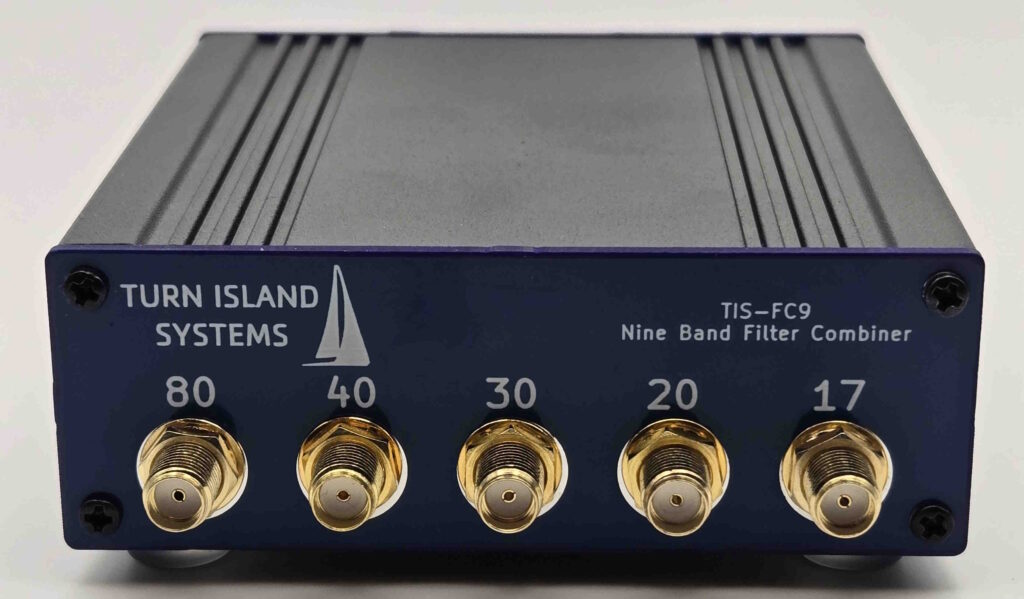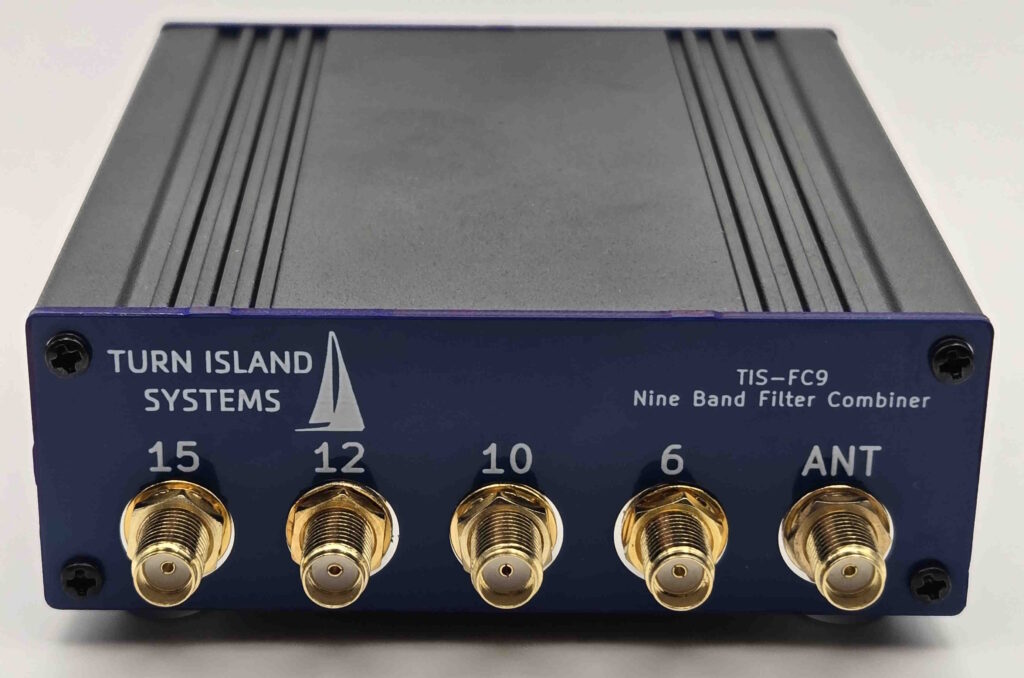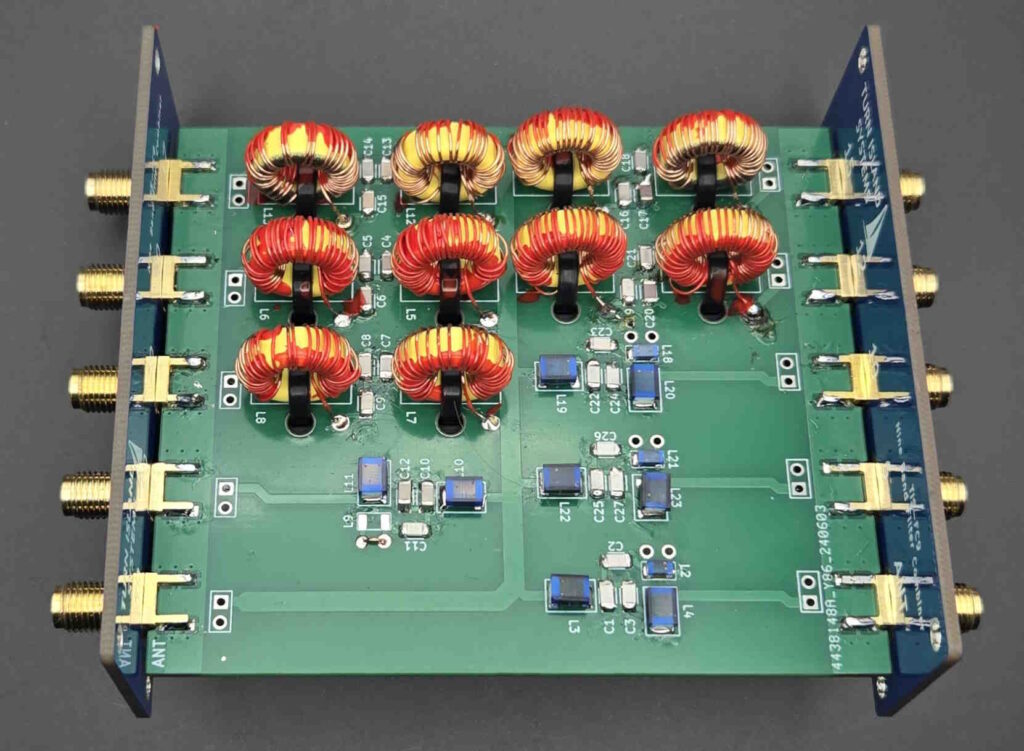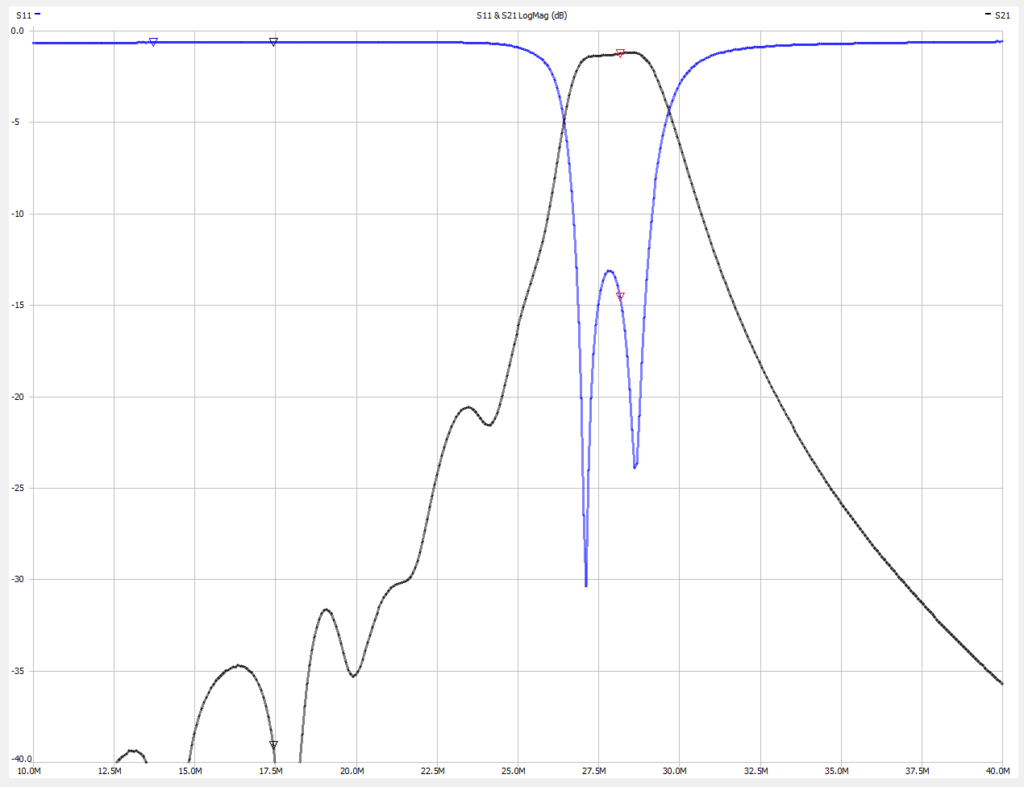

I’ve been trying to avoid this one because winding and adjusting all those toroids is tedious and time-consuming, but this thing just makes so much sense that I had to do it. The Nine-Band Filter-Combiner (9BFC) is yet another filter-combiner for use with the WSPRSONDE and other QRP transmitters, and it allows a single multi-band antenna to be driven by multiple transmitters. It combines inputs on 80, 40, 30, 20, 17, 15, 12, 10, and 6 meter ham bands. You don’t have to use all the inputs; leaving any unused ones unconnected is just fine.
The 9BFC design is quite a bit more critical than the previous 6-band combiner, as the added 17 and 12 meter bands are extremely close to the 20, 15, and 10 meter bands. This tight spacing requires rather narrow filter passbands, and there is always a tradeoff between filter bandwidth, inductor “Q”, and filter loss. In order to keep the 9BFC loss to a reasonable level, commercially-available surface-mount inductors as used in the 6BFC are not adequate for these five closely-spaced bands. Instead, I am using iron-powder toroids (T50-6 variety) for those frequencies. The 80, 40, 30, and 6 meter filters do use surface-mount inductors.
Not only are these toroids tedious to wind, but the inductance of each of the ten toroids must be carefully adjusted to provide the proper filter shape and impedance match. Adjustment is done by spreading or compressing the windings while observing the filter response with a Vector Network Analyzer — this process requires some iteration since each channel has two toroids and they do interact. Once adjustments are complete the windings are secured with fingernail polish.


Of course, your antenna has to support the bands in use. When using the eight-output WSPRSONDE and the EFHW-8010 (end-fed half wave, 80-10 meters, from myantennas.com) I am using all the 9BFC inputs but the 6 meter port. It works quite well (my two WSPRSONDE locations are shown here, Friday Harbor WA, and Occidental CA). I have a separate 6-meter antenna for the Occidental site.

